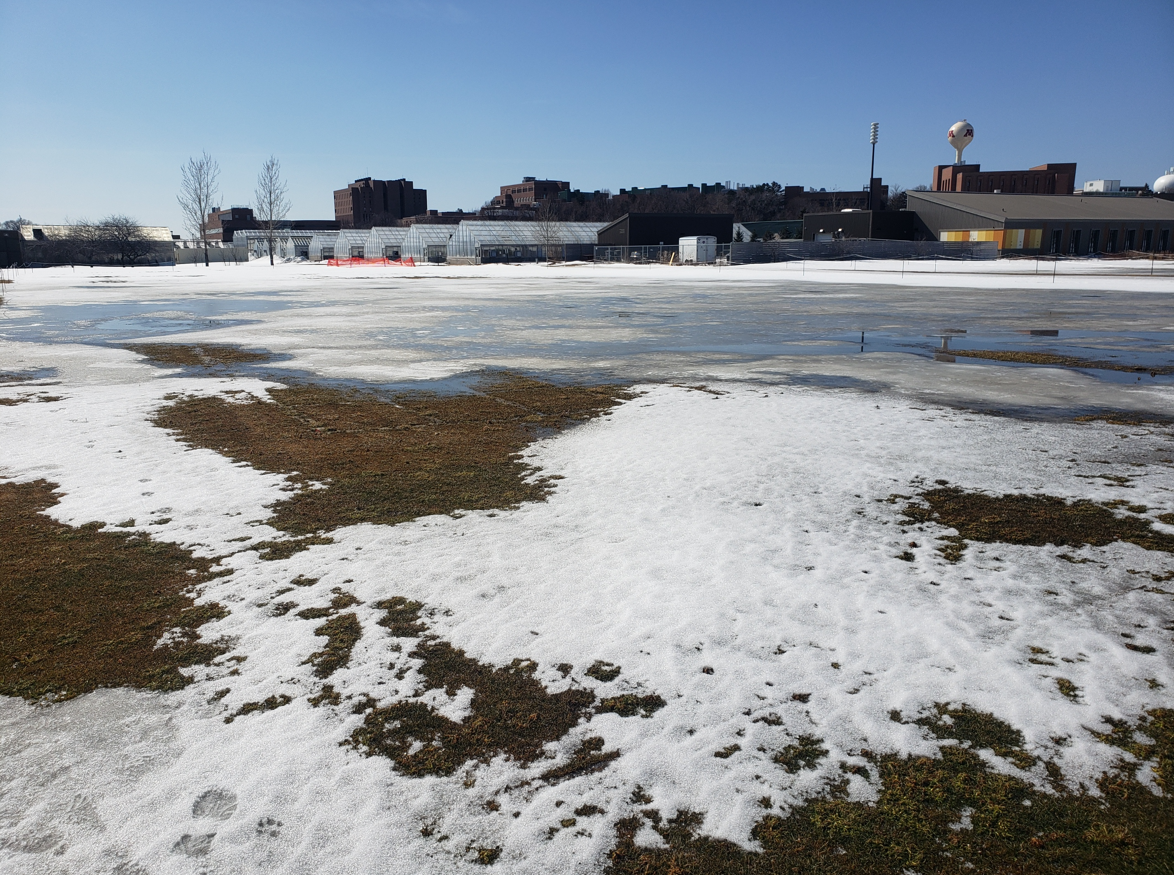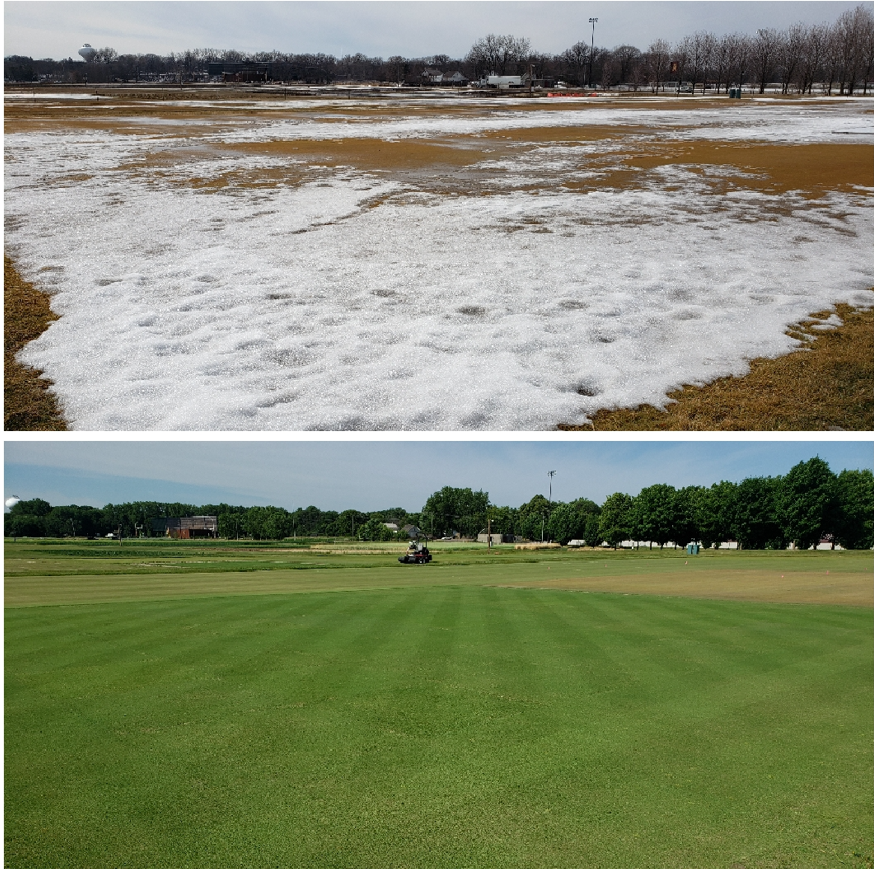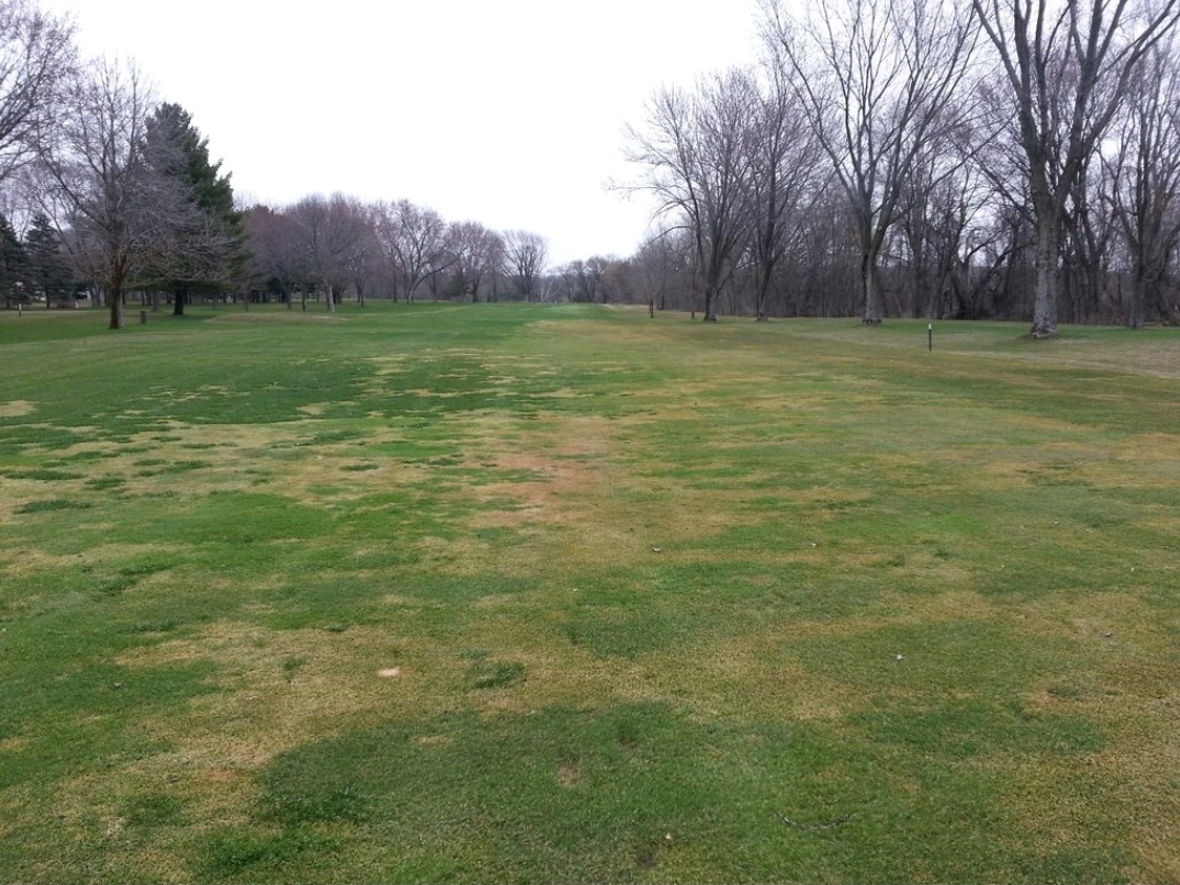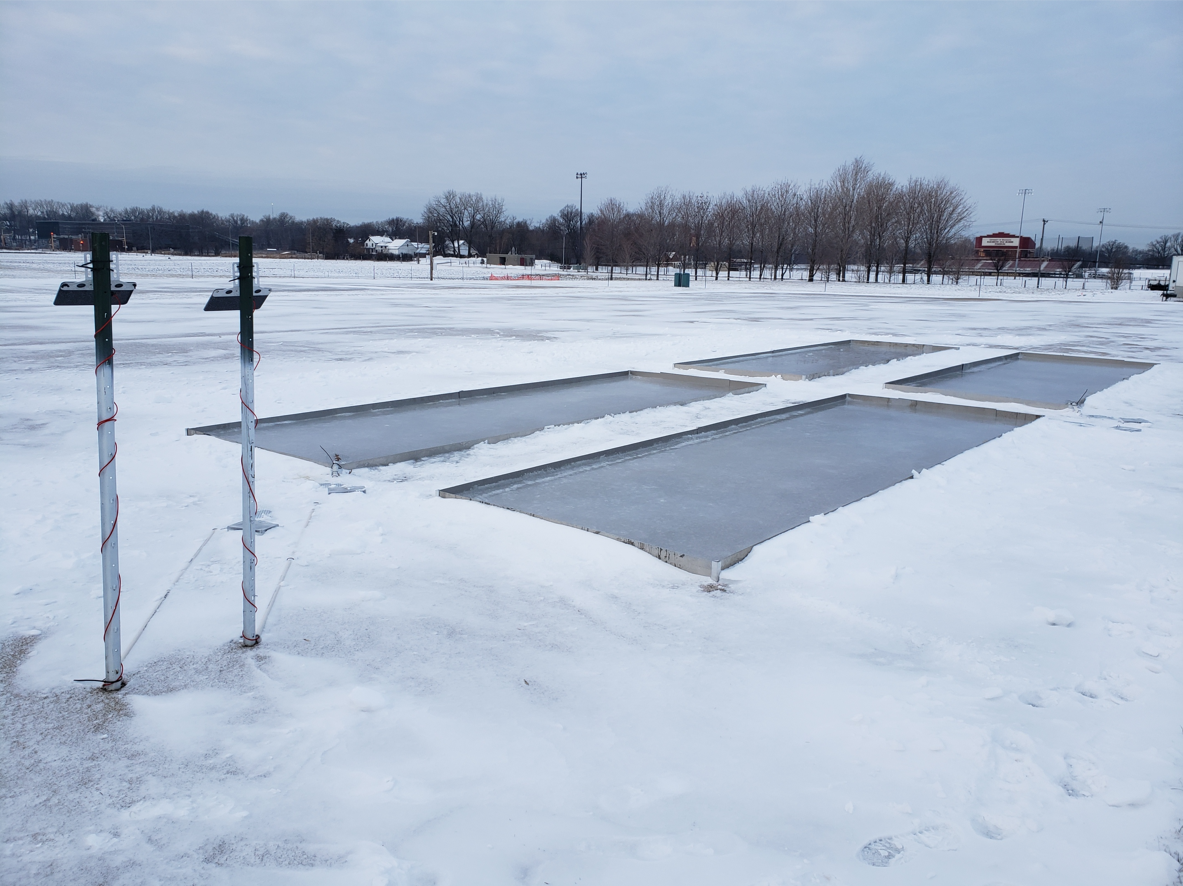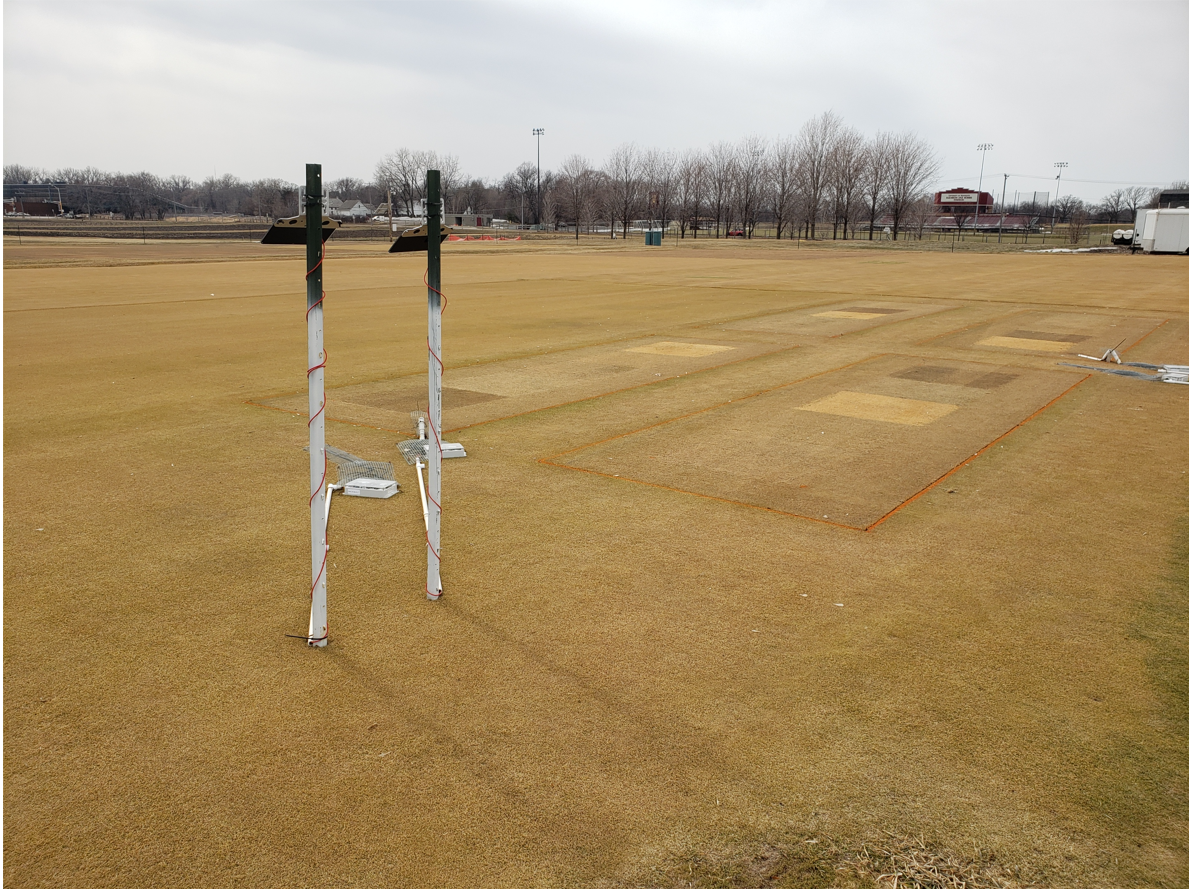By Gary Deters
Spring usually means exciting times for anyone who likes outdoor activities involving turfgrass. As the days get longer and the snow recedes, the turfgrass underneath begins to reveal itself (Figure 1 and 2). For those whose jobs do not involve caring for turf areas, it might be surprising how very stressful spring is for a professional turfgrass manager. Dead turf on golf course greens can lead to closure of the course to reseed or the need to play on temporary greens, leading to reduced revenue and a loss of enjoyment to those who want to play the course. For this reason, a golf course superintendent always wants to begin the season with a healthy stand of turf. This can also be said for the turf manager of a park, sod farm, soccer field, baseball field, and any turf areas where there is an outdoor activity. It takes a lot of time, thought, and hard work to get back to “normal” standards, which is why there is a lot of anxiety about even the idea of dead turf.
During my time working on a golf course, first as assistant and then as a superintendent, we had dead turf on several occasions. In most cases it was dead Poa annua (annual bluegrass) on the fairway (Figure 3) but there was one spring when three greens were affected. We needed to have three temporary greens to start the season while newly sown seed germinated and grew strong enough to withstand golfer traffic and summer heat stress. Although losing three greens to winter damage might sound awful (it is), over the last decade there have been several golf courses in the Twin Cities that have lost most of their greens and fairways to winter damage. In recent years, this challenge has caused some courses to temporarily close in order to regrass greens, tee boxes, and/or fairways with the newest cultivars of creeping bentgrass (Agrostis stolonifera) to better withstand winter turf injury. There are a lot of important factors that go into selecting the right species of turfgrass for each golf course, but winter survival is at the top of the list. The Mother Nature element of turfgrass management is real and there will be some winters when no matter the preventative measures winter injury or death will take place. This is just another reason why there can be anxiety about spring and the snow melt while it is happening.
The University of Minnesota Turfgrass Science team recently received a large grant to study winter injury of turfgrasses. Success of the project depends on help from professional turfgrass managers—we are appreciative of the many golf course superintendents who have given their time to help monitor winter conditions on their course. Some of these superintendents have also helped by hosting environmental sensing nodes on their course so that we can learn more about the factors that bring damage to turf surfaces. Past work funded by the Minnesota Golf Course Superintendent’s Association laid the groundwork for this initiative (Figure 4 and 5). With the help of superintendents around the world, many of whom are now dealing with having to recover from winter damage on their courses, we hope to find solutions that allow golf course superintendents to enjoy spring as much as those who use the golf course.
